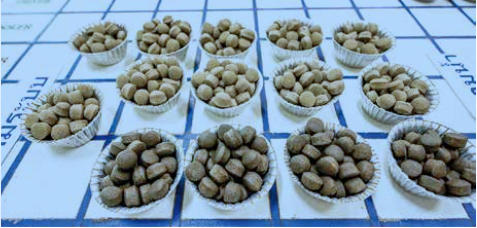Besides delivering unrivaled growth performance, TRF feed is produced according to traceable, rigorous standards to provide safe, sustainable products for customers along the entire value chain.
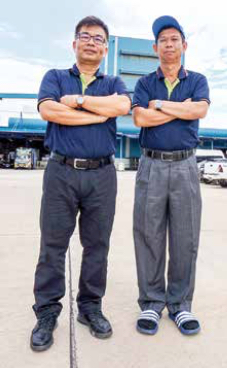
Dr Preecha Ekthammasut, managing director, said TRF has continuously worked to improve the nutrient profile and quality of its feed to ensure a good return on investment for customers. So far, its fish feed offers an FCR of around 1.3-1.5 and shrimp feed around 1.2-1.3.
The new formulas are comprehensively tested at TRF’s lab and research farms before being scaled up for commercial operations. Flexibility is another strength. The company offers custom feed where customers can submit specifications for special orders and receive a price quote. If an agreement is reached, TRF can churn out the feed very quickly.
TRF is committed to using less fish meal in the ration to promote sustainable aquaculture in line with Best Aquaculture Practice guidelines. It is determined to keep fishmeal content below 5%-10% in the formula in 2020, down from 20% in 2010.
At present it supplies 5,000 tonnes of shrimp feed/month and 2,500 tonnes of fish feed/month. A robotic packing line will be installed in 2020.
Kittipong Mitrpitak, quality assurance manager, said plant layout is configured based on work flow and feed safety. Raw materials and finished goods are stored in separate locations.
QR codes are applied for inventory control. Raw material inputs and premixes are double checked so that ingredients and premixes are loaded in the correct amounts in proper sequence according to the formula’s specifications.
The raw materials are first ground by hammer mill and stored in 34 bins, each with a 10-tonne storage capacity. Some are re-ground by fine grinders to reduce particle size further for ease of ingestion and to make the feed highly digestible. Both fish and shrimp have a short digestive tract, therefore, correct particle size is essential for achieving good feed efficiency.
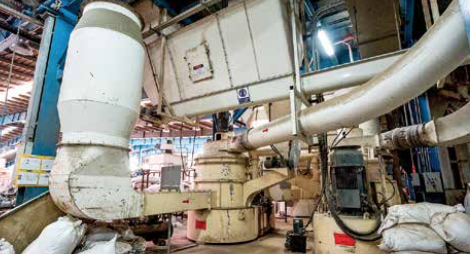
The ingredients are batched, mixed and ground. An automatic batching system portions and weighs macro and micro ingredients on different scales. Scale validation is routinely done twice a year.
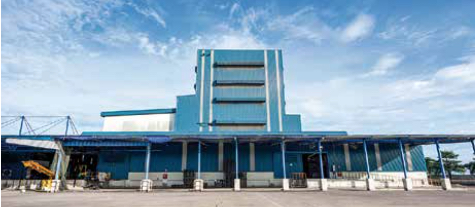
Premixes and additives are added by hand at the two-tonne/batch mixers.
Premix production will be upgraded to fully automatic. Micro bins and a dosing system for premixing will be installed in 2020. Besides making the operation leaner, automation will improve accuracy and reduce plastic bag use.
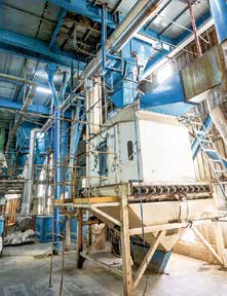
For shrimp feed, mixing starts with dry feed ingredients followed by the addition of liquid components.
The mash is subsequently passed to double-pass conditioners where it is mixed with pressurized steam. This increases the moisture content of the mash and improves pellet quality and throughput because the moisture lubricates the die. The heat treatment also gelatinizes starch making the feed more digestible.
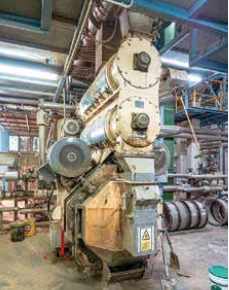
The mash is compressed by rollers and dies in the pellet mill. Then the pellets are cooled down in a vertical counter flow cooler from the conditioning and pelleting temperature of above 100C.
Hammer mills and screens are inspected every 12 hours. Worn out hammers and screens are replaced before the next shift starts. Each die is used for 5,000 tonnes before being refurbished.
Screens are checked for wear every time the formula or feed particle size is changed to ensure optimal grinding efficiency.
TRF’s preventive maintenance team checks the condition of the pellet mills regularly, especially roll and roll gap. The pellet mill is cleaned before changing over to a new formula to prevent carryover between batches.
TRF currently offers pellet feed diameter from 1.2-2.3 mm for vannamei, black tiger prawns and giant freshwater prawns at different growth stages. The feed has at least 2-2.30 hours water stability.
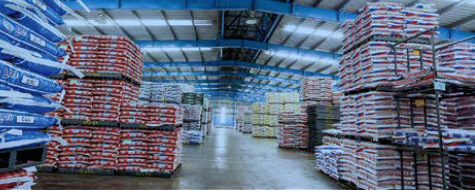
At the packing station, temperature is maintained at a 5C difference from ambient temperature to prevent vapor condensation. Moisture is maintained around 11%, shelf life 90 days.
Among key critical control points are retention time for shrimp feed and temperature during extrusion for fish feed. Also, the level of mycotoxins, antibiotics, heavy metals, pesticides, herbicides and microbial presence are kept on par with DOF standards. Temperature of the feed at the bagging station is also monitored.
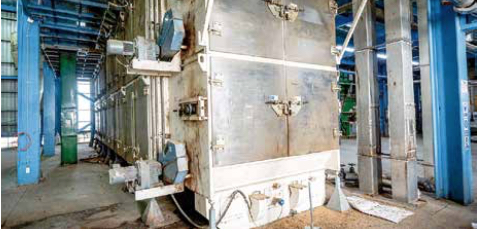
Moisture content is measured under TRF’s quality assurance programs to prevent mold growth during storage.
The plant has a twin-screw extruder line for producing fish feed.

TRF’s fish feed is formulated for sea bass, cat fish and tilapia with bulk density between 400-500 g/l.
TRF was founded in 2013. It was a cold start, Dr Preecha noted, because that year was the peak of the industry’s struggle with Early Mortality Syndrome (EMS), a disease that wiped out over 80% of Thai shrimp production. TRF operated at just 20% of designed capacity for a few years until the market picked up. Apart from feed, TRF was also one of Thailand’s largest shrimp exporters.
TRF is currently ranked as the 5th largest shrimp feed producer in terms of production capacity and 9th largest fish feed supplier in the country. It exports a small volume of fish and shrimp feed to Malaysia and Vietnam.

